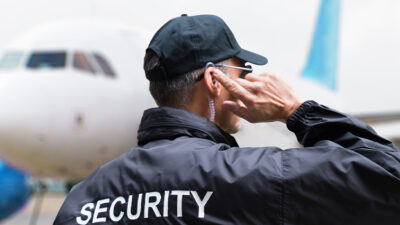Why Angle of Attack (AoA)?

Aviation authorities around the world, including our own FAA, have made conquering Loss of Control Inflight (LOC-I) a top priority. In order to take on the #1 cause of fatalities in aviation today we have to acknowledge that a broad deficiency exists in AoA awareness and AoA management. The reason is that most of us don’t have visibility of our actual AoA during flight—it is simply not displayed. And if it is displayed, it is not always effectively trained to or interpreted.
Flight Training and AoA
AoA is defined as the acute angle between the chord line of the airfoil and the direction of the relative wind. Although we are introduced to AoA in academics during our earliest phase of flight training, our very first flights immerse us in “flying the numbers” on the air speed indicator (ASI), as ASI is a Primary Flight Instrument. Flight training entities rarely focus on AoA information. Our POH procedures, maneuvers and transitions all reference indicated air speed for all critical flight parameters, including stall. Worse, these “numbers” are based on unaccelerated (1G), coordinated flight at Maximum Gross Weight. In fact, airborne flight training rarely builds an actual awareness of AoA, which is the only direct way to determine the aerodynamic health of an airfoil.
The lift coefficient of an airfoil varies with its AoA. Figure 1 depicts a typical lift vs AoA curve for a positively cambered wing found on most aircraft. The curve shows that the coefficient of lift (total lifting force) increases as AoA increases—up to the maximum lift coefficient, after which lift actually decreases as AoA continues to increase1. The critical angle of attack—also known as “stall angle of attack,” is the angle of attack which produces maximum lift coefficient (CL max). Below the critical angle of attack the coefficient of lift increases with increasing AoA. As AoA approaches the critical angle, the airflow over the upper surface of the airfoil becomes increasingly disturbed, eventually separating from the wing. This separation starts near the trailing edge of the wing and shifts rapidly to the leading edge as AoA is increased above the critical angle. In other words, the onset of stall occurs immediately as the AoA exceeds the critical angle, and if not decreased will progress rapidly into a deep stall as the AoA increases beyond that point.

Although the airspeed required to achieve any given flight operation changes with gross weight and G-load, the specific AoA does not change. An airfoil can stall at any airspeed, but only one specific critical AoA.
Although AoA systems are common to military and high-end civilian aircraft, they are not incorporated in all aircraft due to design and cost impracticalities. This is not to say that we don’t have AoA measuring systems on our aircraft; most stall warning systems are in fact instruments that measure and alert pilots to AoA. But this information is not usually presented to pilots as an indicated parameter, and, more significantly, AoA is not trained to as a crucial piece of information in flight.
FAA Requirements for AoA Systems in General Aviation
Recognizing that pilots who are provided with precise AoA information during flight are better able to avoid and mitigate LOC-I accidents, the FAA issued an extraordinary new policy2 in early 2014 which streamlines the requirements for incorporating AoA systems in general aviation (GA) aircraft. With improved stall awareness through the use of AoA instrumentation and displays, pilots can better manage the one specific critical AoA that will keep them flying and avoid a LOC-I situation.
Any given airfoil can stall at any air speed but will only stall at a specific AoA. We’ve got to learn to incorporate AoA into our scan in order to improve our awareness of the flying condition in every phase of flight.

Prevailance Aerospace is a UPRT provider that has been working with corporate, government, and general aviation pilots to improve safety in the aviation industry. Prevailance Aerospace uses Extra 300 Series Aircraft for training and our pilots are experienced aviation professionals from various military and general aviation backgrounds. We know that successful aviation endeavors are accomplished through an uncompromising commitment to safety, impeccable professionalism, tremendous attention to detail, and constant improvement.
http://prevailanceaerospace.com
© 2025 Prevailance Aerospace. All Rights Reserved.
Next ArticleRelated Posts

Emerging Security Threats in Business Aviation: Activism and Down-Route Risks
Security incidents affecting business aviation do not need to involve violence to have an operational impact. A protest delaying crew movements, blocking access to a hangar or resulting in an unauthorized photograph of a sensitive client can all trigger reputational, financial or compliance concerns for operators.

Navigating Geopolitical Uncertainty Using Business Aviation
Bigger business jets mean bigger fuel tanks, longer trips, more border crossings, and bigger wallets! With an equipment upgrade also comes the requirement for a knowledge upgrade.

